The boat was looking pretty functional, but the inside needed some tuning up, fixing cracks and chips in the gel coat, adding some foam to the flotation and putting on the top trim.
The push fit trim fit perfectly, and will provide protection from and for the fiberglass edge.
The polyurethane foam from a can was nasty, sticky, and probably unhealthy stuff to work with. It stuck to tools, to hands (gloves!), the floor, my clothes, and some of it even to the old foam in the boat. I could not make this look fancy, so I settled for functional.
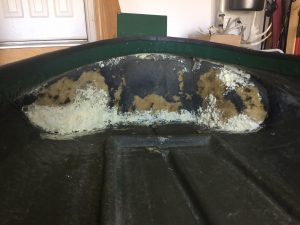
After patching the inside bottom, it was time for the final coats of paint and varnish. The transformation was spectacular, if i may say so myself.
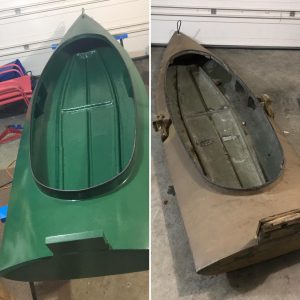
I decided to not rebuild the oar locks. In fact I built one, from hardwood , but didn’t put it on. The boat is more like a square-stern kayak, and the oar locks would be sitting quite close to the rower, making for an awkwardly short stroke. I would paddle it like a canoe at first and make further decisions later.
I had some trepidation if I would actually be able to transport it in the truck, but that worked out OK.
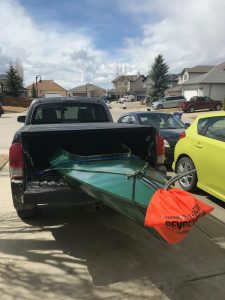
The maiden voyage took place on a beautiful spring morning. I went looking for snow goose, found none, but did manage to sneak up on dozens of waterfowl, within easy shotgun range. The concept of using this boat to cruise the edges of lakes might actually work!
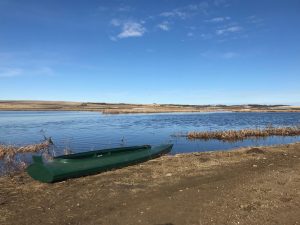
After this first trip, I decided to add a hole to the outboard mounting plate, so I could rig up an anchor of sorts, which would be helpful for fishing trips.
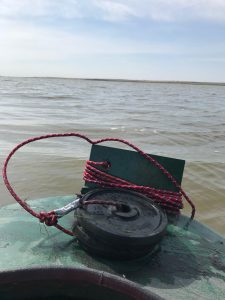
With spring season over, it was time to put on the final tweaks (see Part IV).